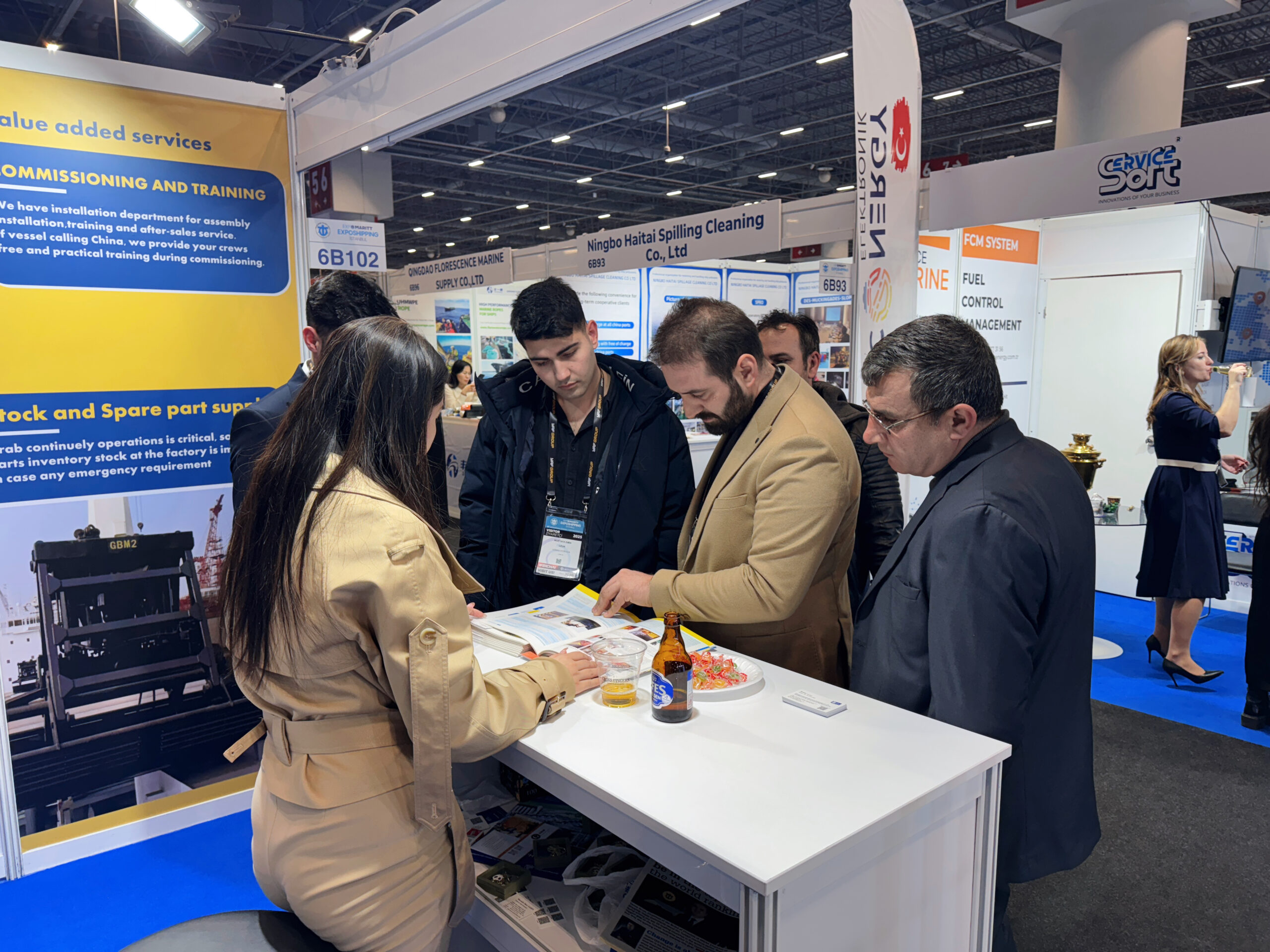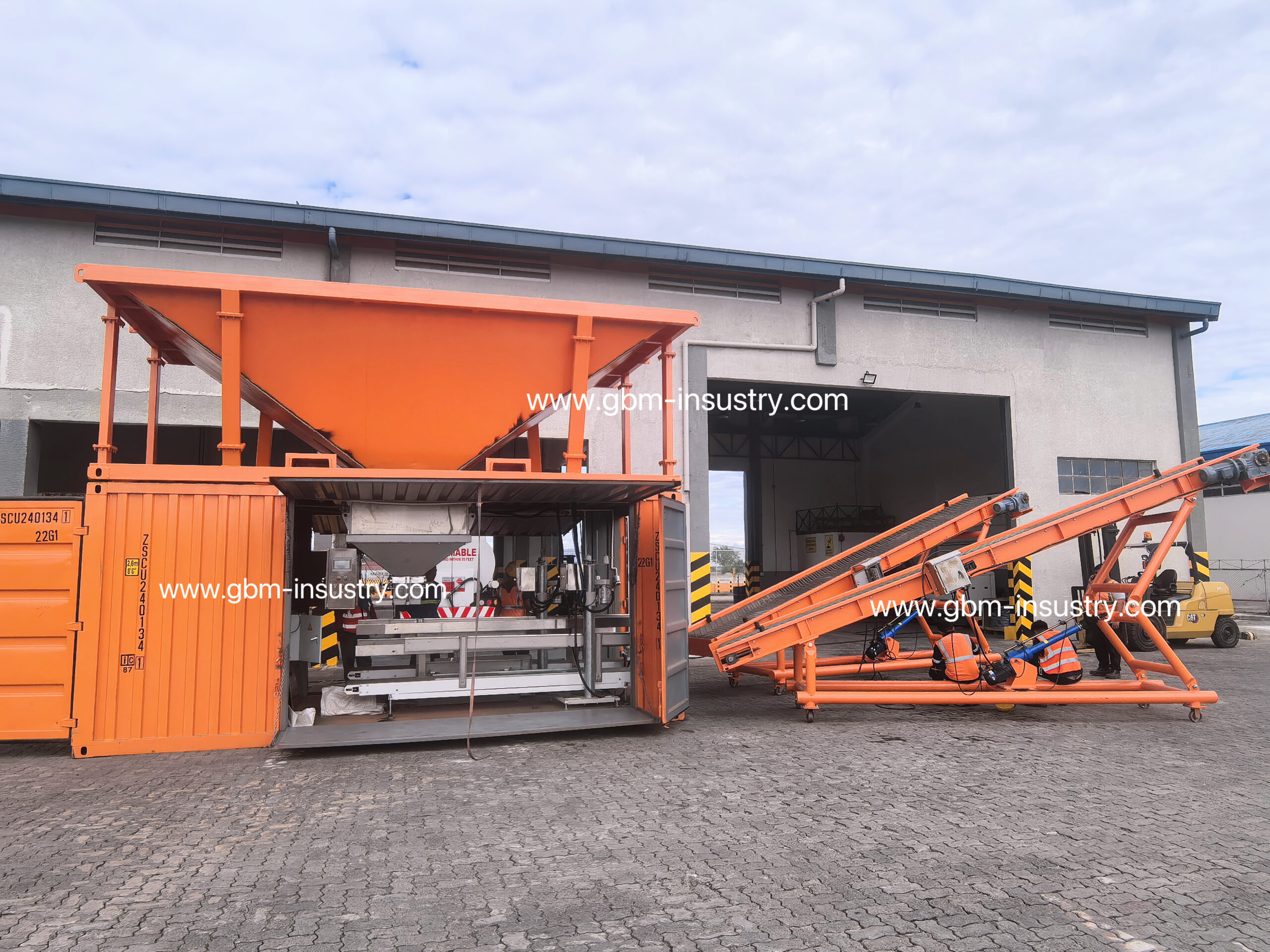With the continuous development of group transportation modes, container transportation has emerged and developed rapidly. It has now become one of the main modes of material trade and transportation between different countries and regions around the world. With the rapid development of container transportation, people demand that container handling processes must be efficient and energy-saving, which has become an inevitable requirement of the times and plays a major role in port terminal transportation.
Overview of port container loading and unloading technology
The main feature of tire-type gantry cranes is their flexibility, which plays an important role in container loading and unloading. They are currently widely used around the world. RTGs are most widely used in container terminals and have been used as stacking machinery for a long time. However, tire-type cranes mainly use diesel as their main fuel, which is characterized by high energy consumption and high noise levels. This is not in line with the current national requirements for energy conservation and emission reduction. In addition, tire-type container gantry cranes emit a large amount of exhaust gas and cause significant noise pollution, which is not conducive to energy conservation and environmental protection in the construction of green ports. At present, most ports have undergone RTG oil-to-electricity technical transformation, and some newly built terminals use ERTG technology.
There are many ways to apply “oil-to-electricity” technology to RTGs, such as overhead sliding contact lines, rigid sliding contact lines, and cable reel power supply. Each method has its own advantages and can be applied to different work situations. For example, cable reel power supply is more suitable for small-scale container ports. Large container terminals are more suitable for high and low overhead conductor rail power supply technology, which can achieve the goal of energy conservation and emission reduction. The three “oil-to-electricity” technologies mentioned above mainly use electrical energy and can achieve energy conservation and environmental protection. Currently, most ports in China have completed “oil-to-electricity” conversions, achieving significant energy-saving effects, with energy consumption reduced by approximately 70%. The application of “oil-to-electricity” technology in RTGs effectively prevents air pollution, achieves energy conservation and emissions reduction, and reduces reliance on petroleum. The application of “oil-to-electricity” technology in RTGs has gained widespread recognition and holds promising future prospects.
The full name of a tire crane is a tire-type container gantry crane. RTG is the main equipment of major container specialized terminal yards around the world. After “oil to electricity” conversion, RTG is called ERTG technology, which adopts AC cage-type asynchronous motor drive and variable frequency speed control technology, with constant output torque and a variable frequency closed-loop vector control mode for the lifting mechanism. Although this technology improves energy efficiency, the use of conventional variable frequency speed control technology limits the process of converting potential energy into electrical energy and feeding it back into the grid, resulting in new energy losses. Therefore, further exploration of its energy-saving technical issues is still necessary.
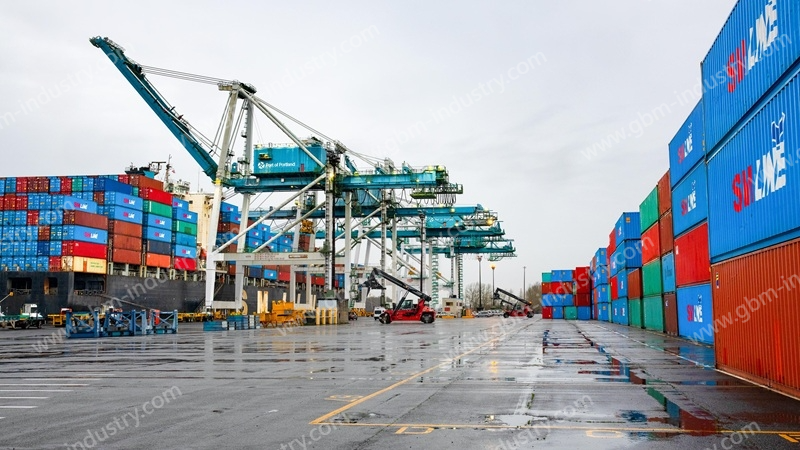
Analysis of energy-saving technologies for port containers
ERTG energy-saving technology
2.1.1 Application of energy feedback technology. During the container loading and unloading process, not only does the mutual conversion of electrical energy and potential energy occur, but during the container lifting process, a certain amount of electrical energy is consumed and converted into the potential energy of the container. In contrast, during the container lowering process, the potential energy of the container gradually decreases and is converted into electrical energy. Therefore, it is necessary to study the use of the energy generated in this process to prevent an increase in the load on the mechanical heat dissipation components. The application of energy feedback technology can effectively handle this part of the electrical energy, achieve energy recycling, and at the same time effectively save the energy consumption produced during the container lifting process. The application of energy feedback technology in container transportation can save 33% of electrical energy. Therefore, the widespread application of energy feedback technology can save a large amount of electrical energy, improve the current tight power supply situation in China, save GDP energy consumption, and no longer rely on international energy supplies, playing an important role in maintaining energy security.
2.1.2 Application of supercapacitor technology. The energy feedback process technology of ship-to-shore cranes and yard cranes can generate a certain amount of energy that can be stored, and the renewable energy generated by ERTG can reach more than 30% of the energy required for the entire operation cycle. Renewable energy can be recycled, which not only saves a lot of energy, but also improves the working conditions of the heavy-load lifting process, ensures that the power does not suddenly increase, and can play a certain protective role for the electric motor, preventing stalling during operation and extending the service life of the electric motor. Supercapacitor technology not only stores a certain amount of energy but also supplements system functionality when it is insufficient, providing a reasonable energy boost to the system. Supercapacitors differ from ordinary capacitors, with key features including high capacitance, rapid charging and discharging, low efficiency, long lifespan, no temperature restrictions, and safety.
Application of LNG container trailer technology
Currently, international oil prices are rising, and excessive use of fuel also pollutes the environment, so it is necessary to find new energy sources to replace fuel. LNG trailers are a national new energy project, mainly characterized by low energy consumption, no pollution, and low emissions. The main fuel is liquefied natural gas, which can reduce exhaust pollution emissions by more than 80%, contributing to sustainable development. LNG contains no sulfur compounds, lead dust, or benzene-based substances. Additionally, engines powered by LNG emit significantly cleaner exhaust than diesel engines. LNG is stored at low temperature and low pressure, which is safer. The working performance of the natural gas engine of the LNG trailer is the same as that of the diesel engine, which is completely capable of low-speed, high-torque production in ports, and the natural gas engine can achieve the goal of energy conservation. It can prevent air pollution, achieve the goal of energy conservation and emission reduction, effectively improve the energy structure, and make humans no longer dependent on oil and other fuels.
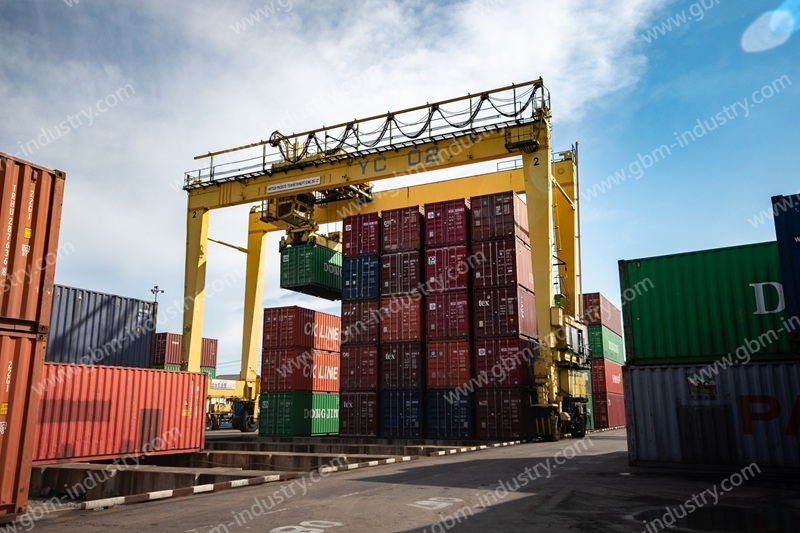
Application of advanced container spreaders
There are currently two main types of container spreaders: hydraulic container spreaders and electric container spreaders. Hydraulic container spreaders are mainly powered by hydraulic pumps, which must operate continuously during the loading and unloading of containers, consuming energy throughout the entire process. Electric container spreaders do not have hydraulic power, and their main power does not come from hydraulic pump motors. Motors are installed in different parts of electric container spreaders. Therefore, when power is needed in different parts, only the corresponding motor needs to be started, and if different parts do not need to be in working condition, there is no energy consumption. Data shows that the energy consumption of fully electric container spreaders is only 6% of that of hydraulic container spreaders, which has obvious energy-saving effects. Electric container spreaders are different from traditional hydraulic container spreaders. Not only can they effectively save energy, but electric spreaders are also easy to maintain and have a significantly longer service life than hydraulic spreaders. From the comparison of the above two types of spreaders, it can be seen that fully electric container spreaders have obvious advantages and will gradually replace hydraulic spreaders in future development. Moreover, the performance and maintenance costs of fully electric container spreaders are significantly better than those of hydraulic container spreaders, greatly saving operating costs and achieving the goal of energy conservation and emission reduction. Therefore, this technical model will definitely be widely promoted.
Currently, container ships are getting bigger and bigger, choosing deeper and deeper shipping lanes, and most of them dock at terminals with high loading and unloading efficiency, which can save a lot of time. Therefore, the requirements for ship-to-shore cranes are becoming more and more stringent. Container spreaders are required to be fast, high, and heavy. For example, lifting two or three containers at a time consumes much less energy than lifting one container at a time. Using double container lifting can complete loading and unloading tasks in a short time, and the loading and unloading efficiency of double container spreaders is more than 60% higher than that of single spreaders. The main lifting method of double container spreaders is side-by-side, which effectively improves loading and unloading efficiency, with an average single lift taking 60 seconds. During the container loading and unloading process, the choice of container spreader has a direct impact on the efficiency of container loading and unloading. From the above discussion, it can be seen that the double container spreader mode is significantly better than the single spreader mode. Port container handling volumes have increased significantly, and container terminals require container spreaders with better performance, higher efficiency, and greater reliability. Therefore, double spreaders will certainly be widely used in future operations.
Application of lightweight technology for port container machinery
Lightweight technology for port container machinery refers to the application of machinery parts and complete machines with greatly reduced weight, using the highest quality materials and the most advanced manufacturing methods in the manufacturing process to achieve optimal performance and energy conservation and emission reduction, thereby saving loading and unloading costs. Container machinery lightweight technology uses the least amount of steel, so it can greatly reduce carbon emissions during the production of machinery, effectively reduce energy consumption and exhaust emissions during the production process, and does not generate a lot of noise, thereby achieving optimal material utilization. Container machinery lightweight technology not only improves the power performance of container machinery, reduces the driving force contact force and friction, and saves the energy consumed by the drive components during operation, but also effectively extends the service life of the entire machine. The application of lightweight container machinery technology can effectively prevent and control air pollution in port areas, achieve energy conservation and emission reduction, and contribute to the restructuring of the energy sector, reducing over-reliance on oil.
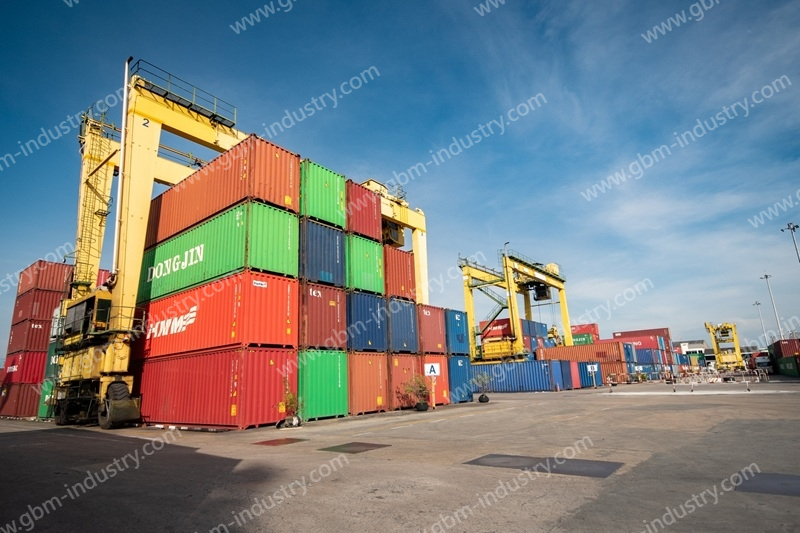
Energy-saving applications of GBM spreaders in container ports
In the process of energy conservation and optimization of container loading and unloading in ports, the selection and application of advanced spreaders is of paramount importance. As mentioned earlier (Section 2.3), fully electric container spreaders are gradually replacing traditional hydraulic spreaders due to their significant energy-saving effects, environmental advantages, and excellent performance, becoming the first choice for green and efficient development in the industry. As a professional container spreader supplier, GBM’s electric spreader series products actively respond to the demand for energy conservation and emission reduction in ports, providing efficient and reliable solutions for the optimization of container loading and unloading processes. Its core advantages are reflected in the following aspects:
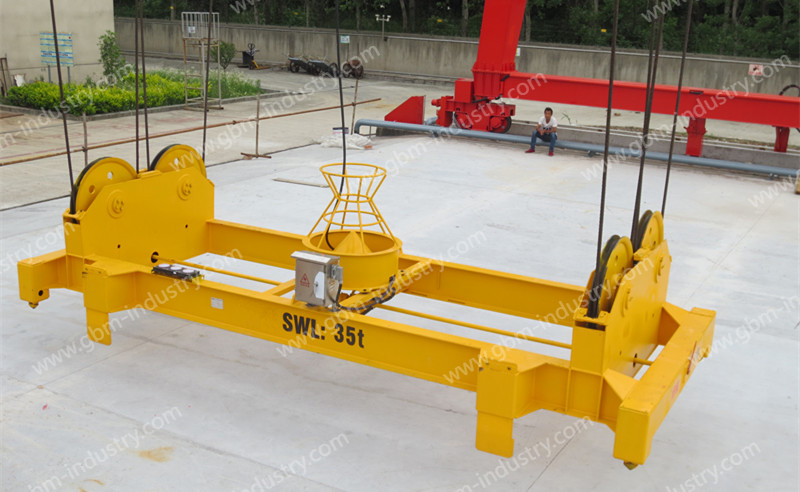
(GBM 20ft electrical container sreader)
Excellent energy-saving performance:
GBM electric spreaders abandon the continuous operation of the hydraulic pump system used in traditional hydraulic spreaders and instead use independent servo motor drives for each actuator (such as rotary locks, guide plates, telescopic arms, etc.).
This design achieves on-demand power supply: the corresponding motor is only started when performing specific actions, and energy consumption is extremely low when in standby mode or when only maintenance is required. This is in stark contrast to the high energy consumption mode of hydraulic spreaders, which require continuous operation of the hydraulic pump to maintain system pressure.
A large amount of practical data confirms the energy-saving effect of GBM electric spreaders, whose energy consumption is usually only 5%-15% of that of hydraulic spreaders with the same function, significantly reducing the overall operating energy consumption of main equipment such as ship-to-shore cranes (STS) and rubber-tyred gantry cranes (RTG/ERTG), directly helping ports to maximize the energy-saving potential of “oil-to-electricity” conversion and electrification of equipment.
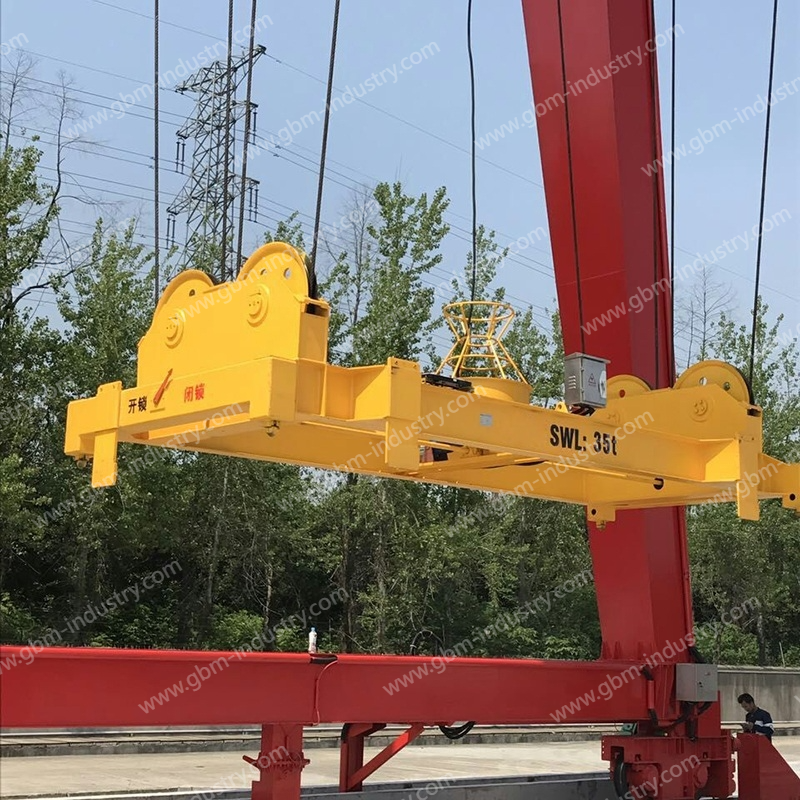
Green, environmentally friendly, safe and reliable:
Eliminates the risk of hydraulic oil leakage: GBM electric spreaders do not require hydraulic oil at all, fundamentally eliminating the risk of hydraulic oil leakage caused by pipe rupture and seal aging in hydraulic systems. This not only avoids oil pollution of containers, docks and the marine environment, but also reduces the costly replacement of hydraulic oil and cleanup of leaks, meeting the most stringent environmental protection requirements.
Significantly reduce noise pollution: The noise generated by the electric drive system during operation is much lower than the continuous roar generated by hydraulic pumps and hydraulic valves during operation. The noise level of GBM electric spreaders is greatly reduced, effectively improving the working environment of terminal operators and reducing the noise disturbance of port operations to the surrounding community, reflecting the concept of green port construction.
Structural optimization, light weight, high efficiency, and cost savings:
Simplified structural design and reduced weight: GBM electric spreaders adopt a modular, integrated design concept, eliminating the need for complex hydraulic stations, oil tanks, oil pipes, and numerous hydraulic valve components. This makes the overall structure of the spreader simpler and more compact, and significantly reduces its weight.
Comprehensive benefits of lightweight design: The reduction in the weight of the spreader directly brings multiple benefits:
Improved loading and unloading efficiency: A lighter spreader means that the ship-to-shore crane/yard crane needs to overcome less dead load during the lifting process, allowing for faster lifting speeds or increased effective load capacity.
Reduced equipment energy consumption: The main engine (ship-to-shore crane/yard crane) consumes less energy when lifting a lighter spreader, further contributing to overall energy conservation goals.
Reduced equipment wear: The reduced weight helps to reduce stress on the structural components of the lifting machinery and extends the service life of the equipment.
Saving operating costs: Simplified structure means less maintenance (no need to replace hydraulic oil or filter elements, fewer hydraulic system failure points) and lower spare parts inventory costs. At the same time, the lightweight design also reduces the manufacturing and transportation costs of the spreader itself. GBM electric spreaders show significant advantages in terms of total cost of ownership (TCO).
With its outstanding performance in energy efficiency, environmental protection, lightweight design, and reliability, the GBM electric spreader has become the equipment of choice for many container ports pursuing efficient, green, and sustainable development. Its application not only directly reduces the energy consumption and emissions of each lifting operation, but also optimizes the energy efficiency of the entire container handling process by improving efficiency and reliability. It is one of the important technical supports for promoting the port’s goal of “carbon peak and carbon neutrality.”
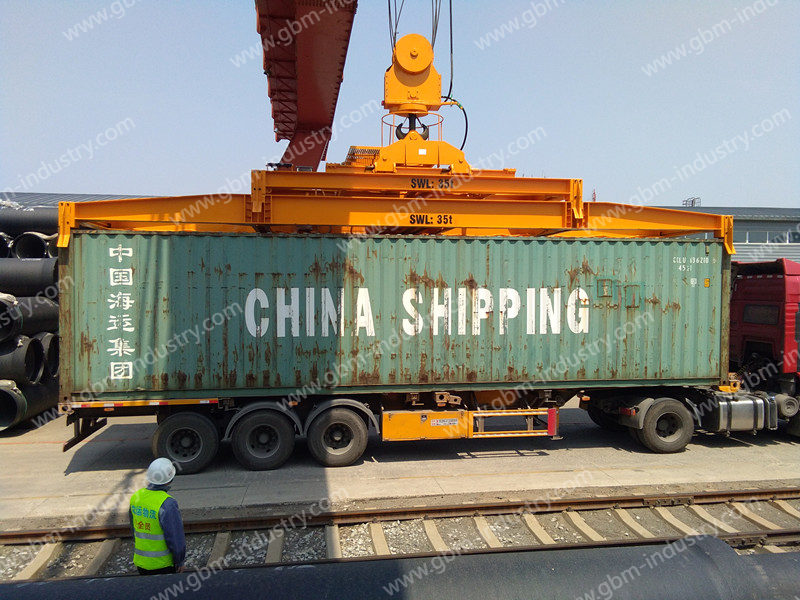
(GBM 20ft-40ft combined electrical container spreader)
Conclusion
As the core hub of global trade, the efficiency and sustainability of the loading and unloading process of container terminals is directly related to the smooth flow and cost of the logistics chain. The current mainstream container loading and unloading equipment (such as ship-to-shore cranes, container trucks, yard cranes, etc.) generally have high energy consumption and high emissions during operation. The key energy-saving technologies for promoting the green transformation of ports include: ERTG energy feedback and supercapacitor energy storage technology for the effective use of renewable energy, LNG trailers as a clean alternative to traditional fuel, significant breakthroughs in eliminating the high energy consumption and pollution risks of hydraulic systems with fully electric spreaders represented by GBM electric spreaders, and the comprehensive benefits of lightweight mechanical technology in material and energy efficiency optimization.
Looking ahead, the development of container terminals will continue to deepen around the core goals of “intelligence, automation, and greening.”



